Panel ceiling in the kitchen: varieties, selection, installation
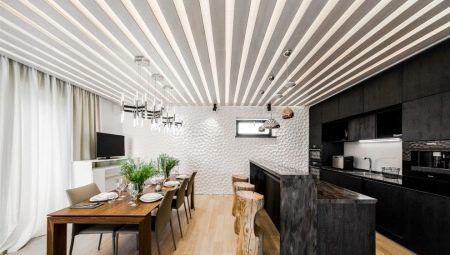
Panels are a versatile finishing material and allow you to quickly and inexpensively repair the ceiling in the kitchen. Due to the long design of the lamellas, installation can be performed in a short time and without great labor costs.
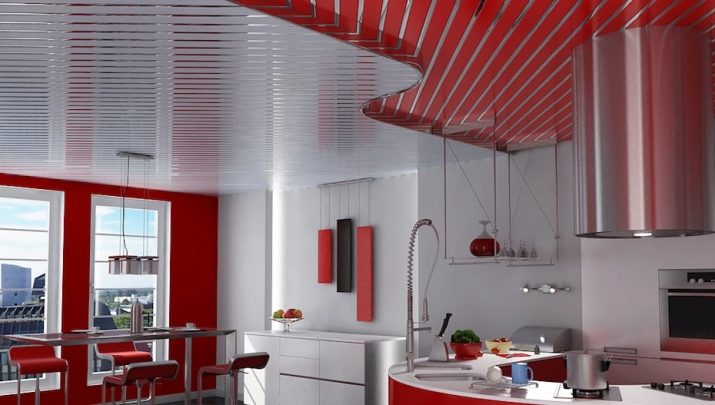
Panel features
There are special requirements for the facing materials used in the kitchen. This is due to the high level of humidity and high temperatures in the working area, as well as the presence of soot and greasy splashes. These factors, to one degree or another, are present in every kitchen and negatively affect the appearance of ceiling coverings. In this regard, the material with which the ceiling will be faced must have high moisture resistance and fire safety, have a long service life and be easy to maintain.
In addition, it is desirable that it has an attractive appearance and is easy to assemble. All these requirements are met by ceilings made of panels. They have high performance, are very inexpensive and look great in the interior.
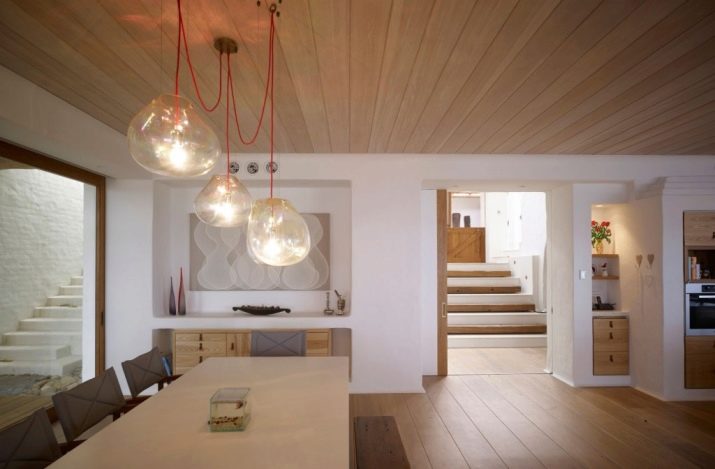
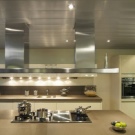



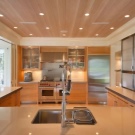
Advantages and disadvantages
Ceiling cladding with panels is considered a fairly popular type of decorative finish, which is due to a number of indisputable advantages of this design.
- Simplicity and high speed of installation allow you to update the kitchen ceiling on your own and in a short time.
- Compared to other decorative finishes panels are sold at a very affordable price and are widely available for consumers.
- Huge assortment of lamellas with a wide variety of textures and designs greatly facilitates the choice and allows you to purchase material for any style and color.
- The surface of the panels contains a minimum number of pores, because of which it has high moisture-repellent properties and is not afraid of steam and drops of fat. It is very easy to wash such a ceiling, and any liquid product is suitable for processing.
- Smooth and hard surface panel ceilings are not afraid of the appearance of mold and mildew, since harmful bacteria simply have nowhere to settle.
- One of the design options for ceilings is their decoration with conventional wall panels. They are equipped with a convenient tongue-and-groove lock, which allows you to assemble the surface like a puzzle.
- For the installation of the panel structure, a frame is required, due to which a space is formed between the floor slab and the suspended lamellas. This allows you to hide all communications in it and makes it possible to hide defects and irregularities in concrete or wooden ceilings. Moreover, the presence of an air gap has a good soundproofing effect, which is especially important in apartment buildings.
- Unlike stretch ceilings structures made of PVC panels are not afraid of floods from above and, with moderate flooding, do not need to be dismantled. The only exceptions are serious accidents, when several tens of liters of water fall on the ceiling. In such cases, the structure is disassembled and the floor is repaired.
- PVC panels are not afraid of high temperatures and thermal drops. The material does not deform, does not crack and does not lose its attractiveness for a long time.
- Due to its high resistance to negative temperatures PVC panels are quite suitable for cladding ceilings in unheated rooms: in a summer kitchen or in a country house.
- The panel ceiling does not absorb food odors, which is especially true for kitchen spaces. In addition, high-quality panels from renowned manufacturers do not emit harmful impurities and toxic substances into the environment. The exception is cheap Chinese counterparts of little-known firms. It is especially necessary to carefully choose plastic models, since during their manufacture unscrupulous companies often violate the production technology and produce low-quality goods.
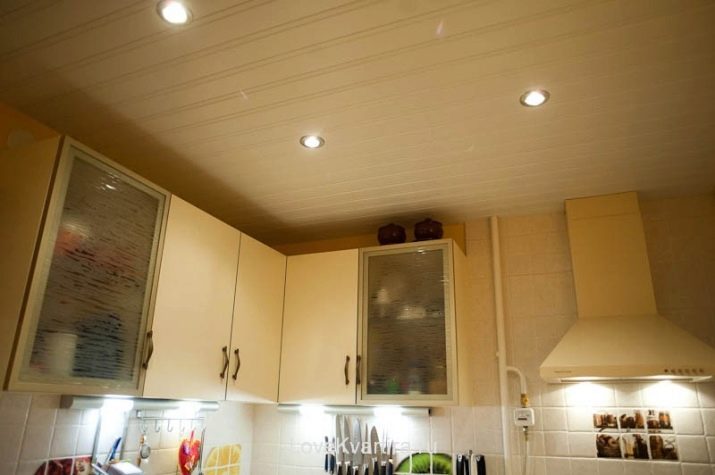
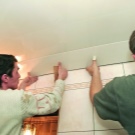


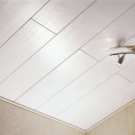

Along with a large number of undeniable advantages, panel finishes still have disadvantages. These include reducing the height of the room, as well as fading in the sun and the appearance of yellowness on plastic models. This ultimately leads to the loss of the attractiveness of the ceiling and the need to replace it. Among the shortcomings, one can also note the difficulty of caring for interpanel joints, which tend to accumulate grease and dirt in themselves.
In order to avoid such troubles, it is recommended to form seamless structures with very tight abutment of the lamellas to each other.
However, the main disadvantage is the fact that decorating the ceiling with panels brings some officeness and bureaucracy into the kitchen. This drawback can be leveled only by the method of careful selection of the colors and texture of the panels, as well as their maximum compatibility with the interior of the kitchen.
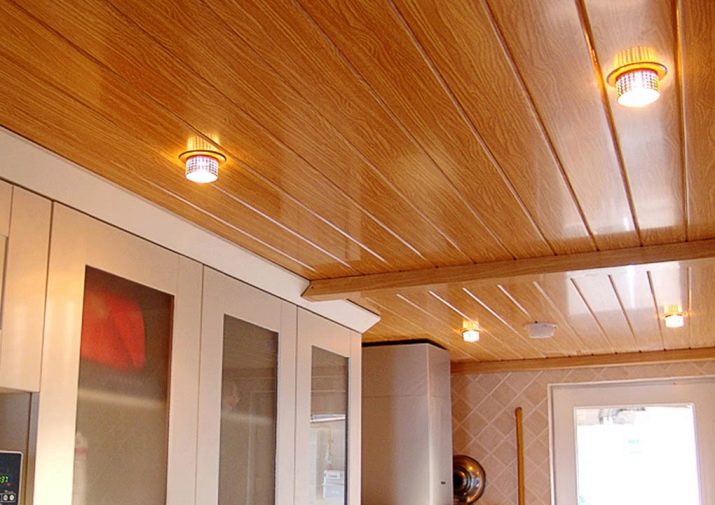
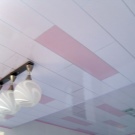


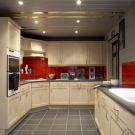
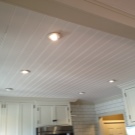
Views
The classification of ceiling panels is made according to several criteria, the main of which is the material for making the lamellas. According to this criterion, several types of coatings are distinguished: PVC and expanded polystyrene panels, as well as MDF models.
MDF
MDF panels are environmentally friendly and look very noble on the ceiling. For their manufacture, phenols are not used, and the shavings are pressed using a hot method. Such a ceiling can serve for more than one year, is easy to install and easy to maintain. Ceiling panels made of MDF are laminated, veneered and untreated (intended for painting). This variety allows you to purchase material in accordance with the interior style and select it for kitchen furniture.
The disadvantages of MDF panels include high weight, flammability and low moisture resistance, which is why it is not possible to see them in kitchens as often as PVC models.
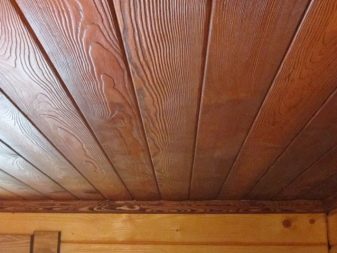
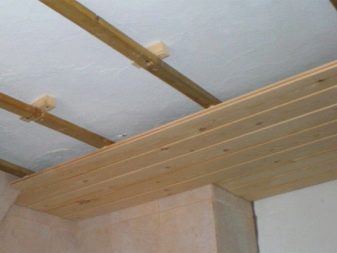


Pvc
PVC lamellas are the most common option for finishing ceilings and are panels of various colors and textures. Polyvinyl chloride lamellas are the leaders in popularity among finishing materials for the kitchen and have excellent working qualities: they do not fade in the sun, are antistatic, are not afraid of scratches and are highly decorative.
Their front side is often decorated with drawings, photo printing or laminated. This allows the panels to be drawn with wood grain, natural stone and other textures. The advantages of such a coating are easy installation, moisture resistance and long service life. The disadvantages include a not very attractive appearance, which, according to most consumers, does not add comfort to the kitchen room.
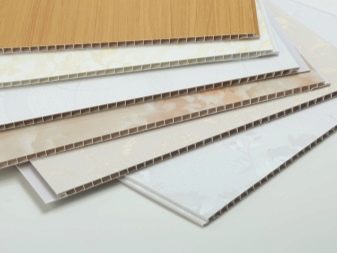
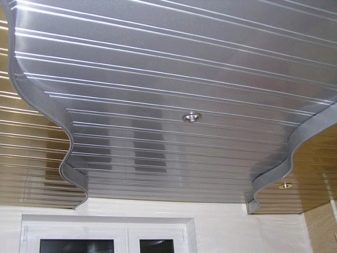
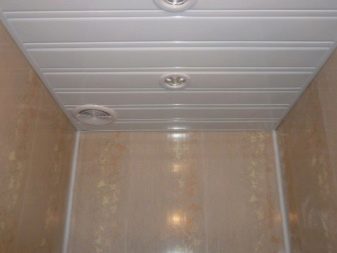
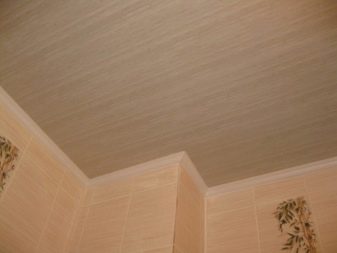
Expanded polystyrene
Expanded polystyrene panels are presented in the form of soft plates, which are the most budgetary option for decorating kitchen ceilings. The advantage of such a cladding is no need to build a frame, as the boards are glued directly to the main ceiling. The disadvantages include a highly porous structure, which leads to rapid contamination of the ceiling.
The way out is to use laminated foam panels, which have a smooth surface and come in a wide variety of colors and textures.
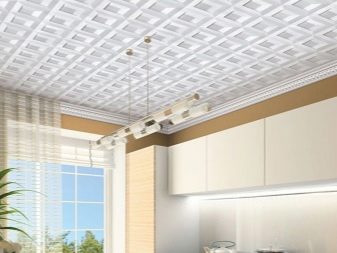
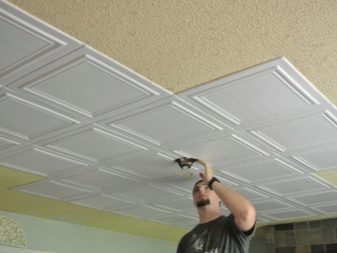

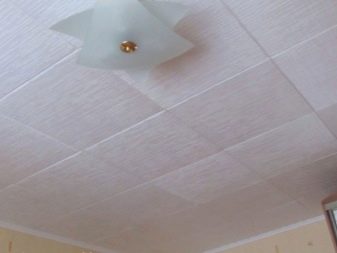
Another indication of the classification of ceiling panels is their size. Panels with a width of 10 to 12 cm and a thickness of up to 1 cm are considered the most convenient for installation. The length is chosen depending on the size of the room, it can be from 1.5 to 3 m.
The panels also differ in the type of connection. On this basis, distinguish seamless pattern and chamfered lamellas (rustic)... For a ceiling structure in the kitchen, it is better to choose types without seams, the components of which fit together as tightly as possible, while forming an absolutely smooth surface. Panels of the second type are equipped with rustication - a decorative recess necessary for joining the fragments into a common covering. Such a ceiling will be distinguished by a pronounced "striping", which is not to everyone's liking.
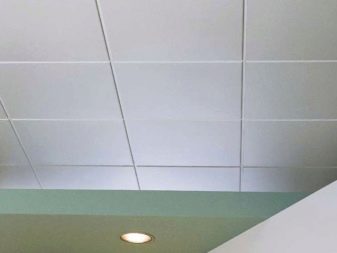
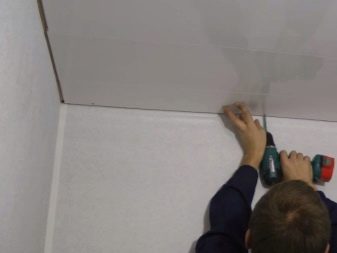
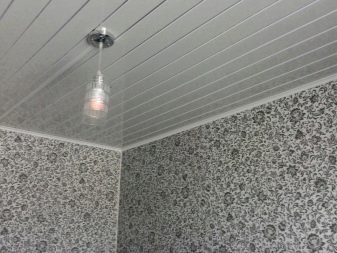

Design
The panel ceiling is not only a practical and inexpensive solution, but also allows you to bring to life the most daring design developments. The design of panel ceilings can be different and represent both single-level and multi-level structures with a straight or curved design.
To form graceful bends, PVC panels are used that bend well and do not break. Flat surfaces are assembled from MDF boards, which often have a pattern of wood fibers and are ideal for ethnic, rustic and ecological styles.

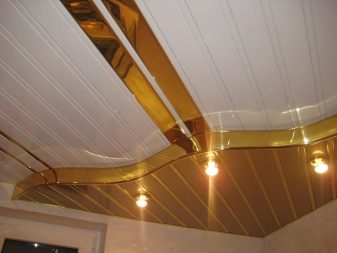

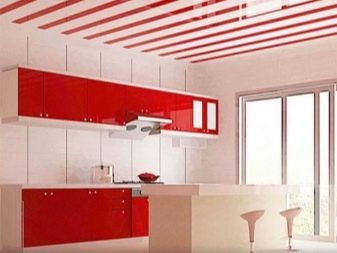
Despite the fact that such panels are available in a wide range of colors, not every color is suitable for a kitchen ceiling. Designers recommend using pastel-colored materials. These colors do not overload the top of the room and visually increase the space. Too dark shades visually lower the ceiling and make the room somewhat gloomy.
With regard to patterns and designs, then when choosing them, you need to be especially careful and observe a sense of proportion. Too ornate lines make the ceiling heavy and oppressive, which is especially felt in small kitchens. For small spaces, only light monochromatic surfaces with inconspicuous interpanel joints are permissible.
Striped ceilings in small kitchens are also unacceptable. The same is true for 3D images, which look good only in spacious and high rooms.

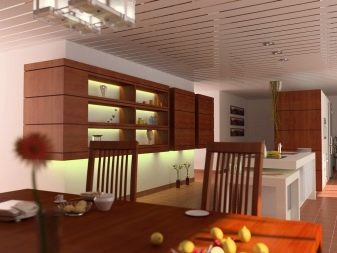


In a kitchen with a low ceiling, it is well suited surface with a slight mirror effect, which will not only add light to a low room, but also visually raise the ceiling.However, there are serious flaws behind the beautiful appearance of glossy ceilings. For example, oily drops and condensation are very clearly visible on a mirror surface, which are almost invisible on matte panels.
The way out of this situation will be use of panels with acrylic coating... Such models have excellent reflectivity and, in comparison with the mirror ones, are much less easily soiled.
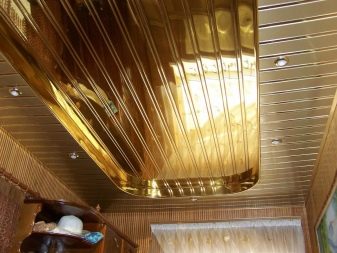
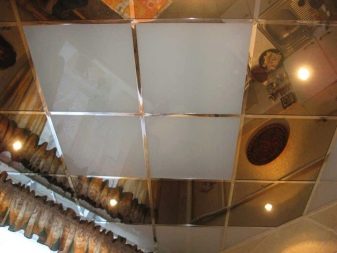
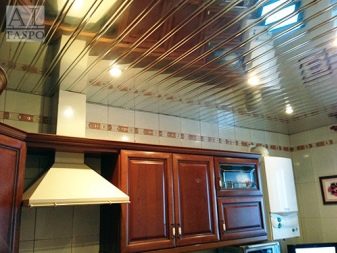
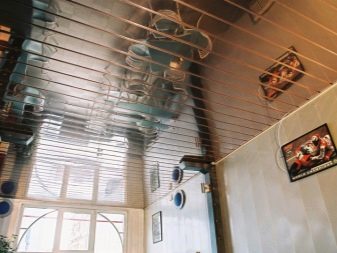
How to choose?
When choosing panels for a kitchen ceiling, you must rely on a number of recommendations.
- The panels must be intact and perfectly straight. If chips and notches are visible on the lamellas, then it is better to refuse to buy them. Firstly, defects will spoil the decorative appearance of the ceiling structure, and secondly, they will violate its integrity. In addition, the painted panels should be painted evenly, without streaks and foreign inclusions.

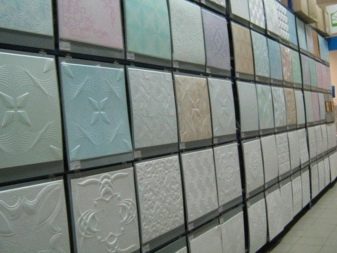
- The material for the production of plastic panels must be elastic, but at the same time tough. Otherwise, there is a risk of getting a sagging thin ceiling or, on the contrary, acquiring poorly bending lamellas, from which it will be difficult to form a curved structure. In order not to be mistaken in the choice, it is necessary to bend the outer layer of plastic and see if a crack or a whitish strip has formed in the place of the fold.
If one of these signs is found, it is better to refuse to buy panels from this batch. The presence of a white strip means that in the production process the proportion of chalk was significantly exceeded, the content of which in plastic is not more than 20%.
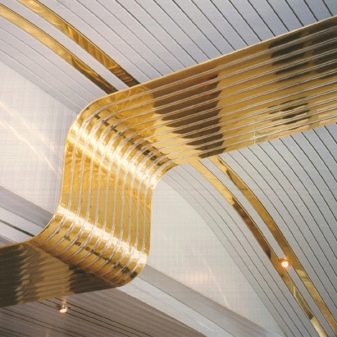
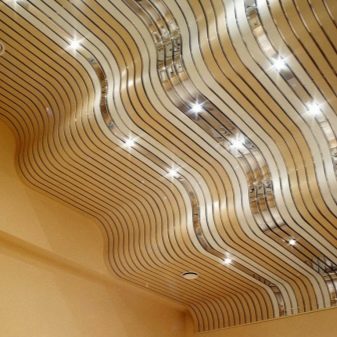
- If you have any difficulties in choosing a color, then it is better to stay on the white version. Such surfaces are suitable for all interior styles, without exception, and significantly refresh the space.
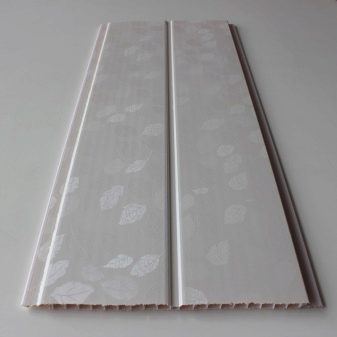
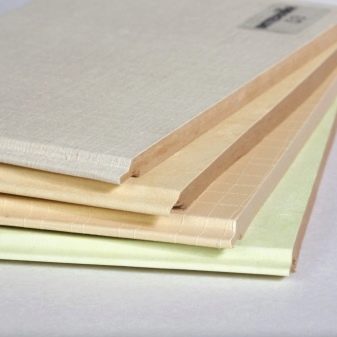
- When choosing MDF panels with a wood pattern applied to them, you must make sure that all lamellas belong to the same batch... Otherwise, there is a risk of getting material of different shades, which will be noticeable especially well on the ceiling.

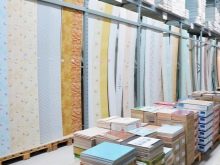
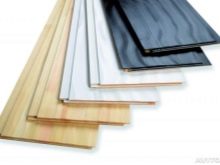
- When buying PVC panels, you need to pay attention to whether the stiffening ribs show through on the front surface of the plate. If this fact takes place, then you do not need to buy such panels, since they will not look very aesthetically pleasing on the ceiling. In addition, if the distance between the stiffening ribs exceeds 1 cm, then such lamellas can deform and sag over time.
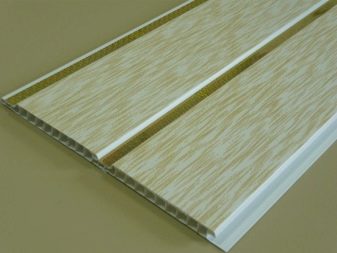
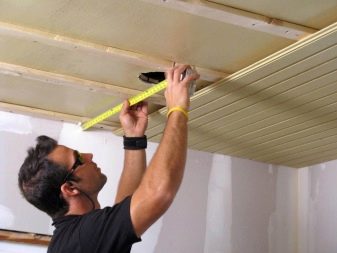
You should also pay attention to the smell. This is especially true for plastic and expanded polystyrene products. To do this, you need to go up and smell the demo samples that have been in the sales area for a long time. If a persistent pungent smell of chemistry emanates from them, then you do not need to buy such products.
Due to a wide variety of models, affordable cost, ease of maintenance and ease of installation, panels occupy high positions in the ranking of finishing materials for the ceiling and allow you to make your kitchen beautiful in a short time.
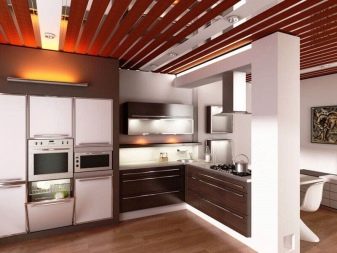
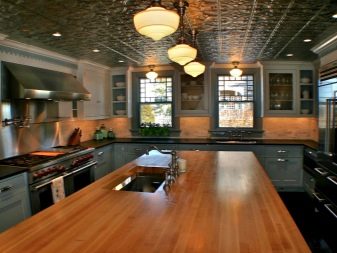
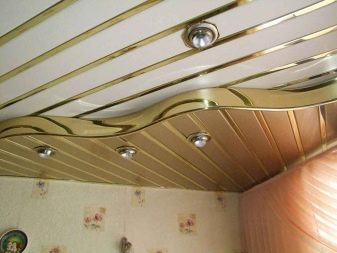

For finishing the ceiling in the kitchen with PVC panels, see the following video.








